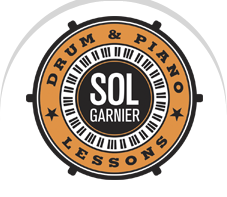It used to be that all the good gigs for drummers involved reading. I can confirm the fact and tell you that, to this day, the most profitable gig I’ve ever done implied that I know how to read. It is such an essential part of being a musician that when I went to Berklee the second year I had two main goals to achieve: improve the speed and accuracy of my bass drum and be able to read “a fly poop on a piece of paper” as the saying goes.
So I worked on reading. In order to do that, of course, I had a routine to read rhythmic books for drummers like “Louis Bellson reading in 4/4” or reading snare drum music sheets. But I also included reading the rhythm of piano music in my regular diet. That is because the rhythms of piano can be extremely complicated. That little discovery gave me an edge, for sure, compared to the drummers who only read rhythmic music. Because piano music got me familiar with the melodic aspect of notation. And this is the part I used the most in my professional life. Usually composers and music directors hand me out a “lead sheet”, meaning the melody of what we are about to play with the structure of the song and some chords. The only part that truly relates to my instrument written on those charts would be the style, things like “fast rock” or “bossa Nova”.
I advise my students to go dig in the piano littérature to train their reading skills, it’s the best and most accessible library I know.
